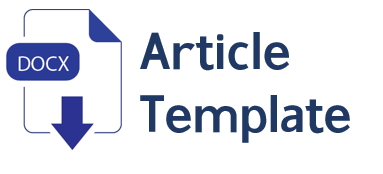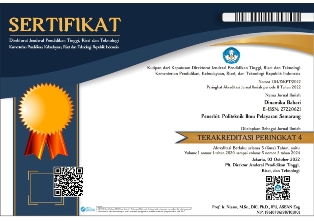Analisis Literasi STEM Dalam Pengembangan Pendidikan Vokasi: Konsepsi Pada Pendidikan Tinggi Maritim
Abstract
Vocational education is a higher education diploma program that prepares students for jobs with certain applied skills to the Associate Expert or Applied Bachelor program. STEM literacy can bridge higher education with competent human resource graduates in the maritime sector that the industry needs because in vocational education through the revitalization program, the industry must collaborate with the needs of the world of work. The research method uses conceptual description analysis on the problem of STEM literacy needs in maritime colleges. STEM literacy includes Science, Technology, Engineering, and Mathematics literacy. Some of the established indicators can use several references from AAAS, ABET, NRC, NCTM, OECD, and ITEA. According to Bloom's taxonomist, the ability level of cadets according to the author can be implemented at levels C4, C5, and C6 for the cognitive domain. The affective domain on attitudes, beliefs, self-esteem, self-confidence, and motivation, and the psychometric domain on actions that indicate motor skills such as in the use of instruments or tools that are precise and accurate.
Downloads
References
AAAS. (2012). Describing and Measuring Undergraduate STEM Teaching Practices. A Report from a National Meeting on the Measurement of Undergraduate Science, Technology, Engineering and Mathematics (STEM) Teaching. In AAAs.
Accreditation Board for Engineering and Technology. (2010). Criteria for accrediting engineering programs. Baltimore, MD.
Bloom, B. S., &. Krathwohl, D. R. (1956). Taxonomy of educational objectives: The classification of educational goals, by a committee of college and university examiners. In Handbook 1: Cognitive domain. New York: Longman.
Herlina, Y., & Mustain, I. (2020). Problem-Based Learning Model Based Coastal Culture To Increase Problem-Solving Skills. 4(2), 169–178.
International Technology Education Association. (2007). Standards for technological literacy: Content for the study of technology (3rd ed.). Reston, VA.
MateriKeynoteICMET. (2019). KEBIJAKAN PENGEMBANGAN PENDIDIKAN TINGGI MARITIM (p. 3).
Mustain, I., & Herlina, Y. (2019). STEM for Establishing Energy Literacy in Maritime Vocational Education.
Scientiae Educatia. https://doi.org/10.24235/sc.educatia.v8i2.5520.
National Assessment Governing Board. (2010). Technology and engineering literacy assessment and item specifications for the 2014 National Assessment of Educational Progress—Pre-publication edition. Washington, DC.
National Council of Teachers of Mathematics. (2000). Principles and standards for school mathematics. Reston, VA.
National Council of Teachers of English. (2008). The NCTE definition of 21st-century literacies. Urbana, IL: Author. Retrieved from http://www.ncte.org/positions/statements/21stcentdefinition.
National Research Council. (1996). National science education standards: Observe, interact, change, learn. Washington, DC: National Academy Press.
National Research Council. (2012). A framework for k-12 science education: Practices, crosscutting concepts, and core ideas. National Academies Press.
Nasution. (2013). Berbagai Pendekatan dalam Proses Belajar Mengajar. Bumi Aksara, Jakarta.
Organization for Economic Cooperation and Development. (2003). Scientific literacy: The PISA 2003 assessment framework. Paris.
Organization for Economic Cooperation and Development. (2006). Assessing scientific, reading and mathematical literacy: A framework for PISA 2006. Paris.
Pramudibyanto, H., & Weningsih, S. (2019). KETERLIBATAN TUTOR DALAM PENINGKATAN ANGKA PARTISIPASI KASAR ( APK ) MAHASISWA ( STUDI DI UNIVERSITAS TERBUKA UPBJJ SEMARANG ). Maksimum Media Akuntansi Universitas Muhammadiyah Semarang, 9(1), 11–21.
Undang-Undang. (2012). Undang-Undang Republik Indonesia Nomor 12 Tahun 2012. In UU Perguruan Tinggi.
Zollman, A. (2012). Learning for STEM Literacy: STEM Literacy for Learning. School Science and Mathematics, 112(1), 12–19. https://doi.org/10.1111/j.1949-8594.2012.00101.x














